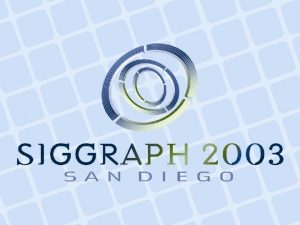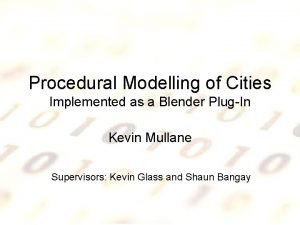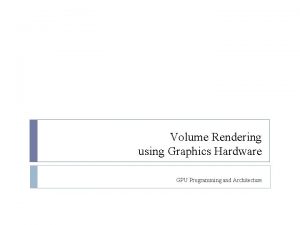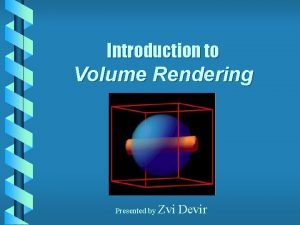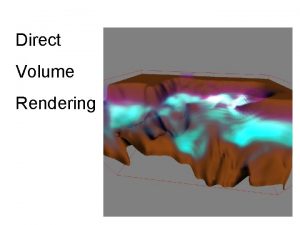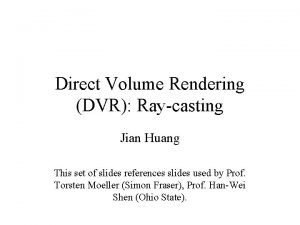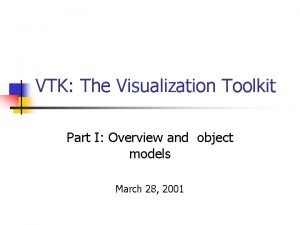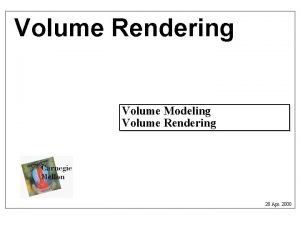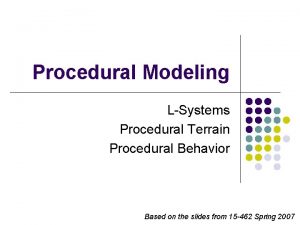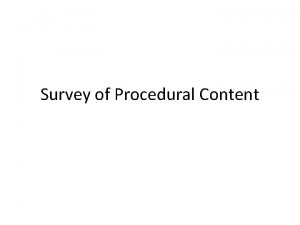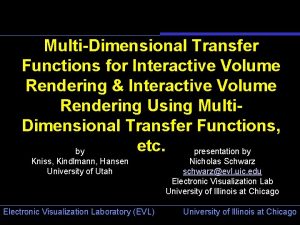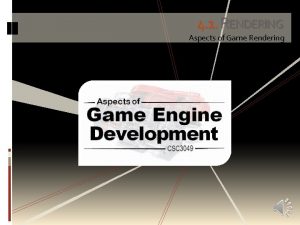Paper4 Interactive Translucent Volume Rendering and Procedural Modeling








- Slides: 8

Paper-4 Interactive Translucent Volume Rendering and Procedural Modeling Joe Kniss Simon Premoze Charles Hansen David Ebert Univ of Utah Electronic Visualization Laboratory (EVL) University of Illinois at Chicago

Introduction • Interactive shading model which captures volumetric light attenuation effects to produce volumetric shadows and the qualitative appearance of translucency. • A technique for volume displacement or perturbation that allows realistic interactive modeling of high frequency detail for real and synthetic volumetric data. • Appearance of many common objects dominated by sub surface scattering effects • Need not be accurate but interactive Electronic Visualization Laboratory (EVL) University of Illinois at Chicago

Volume shading model • Multiple scattering and indirect illumination effects are important and no restrictions on external illumination and optical properties • Color bleeding and diffusion of light across boundaries are also consequences of multiple scattering • Full global illumination , backward scattering and volumetric light sources not part of this model Electronic Visualization Laboratory (EVL) University of Illinois at Chicago

Model • Translucency implies blurring of light thro the medium • Multiple scattering modeled as random walk->light is diffused within volume • Surface shading parameter set automatically using gradient magnitude at the sample Electronic Visualization Laboratory (EVL) University of Illinois at Chicago

Implementation • Tf , light direction and volume data not static. • Diffuse reflectance material , absorption/emission , shadows , indirect attenuation term • Transport color- the color indirect light becomes after getting attenuated by the material Electronic Visualization Laboratory (EVL) University of Illinois at Chicago

Rendering • Uses half angle slicing • modification of the slicing axis allows us to render each slice from the point of view of both the observer and the light. • Total of 3 image buffers • Two buffers are maintained for the attenuation of light in the light direction (current and next), • One buffer for the accumulation of light for the observer, which is typically the frame buffer • Ping-pong blending current next. Electronic Visualization Laboratory (EVL) University of Illinois at Chicago

Volume perturbation Electronic Visualization Laboratory (EVL) University of Illinois at Chicago

Results Electronic Visualization Laboratory (EVL) University of Illinois at Chicago
